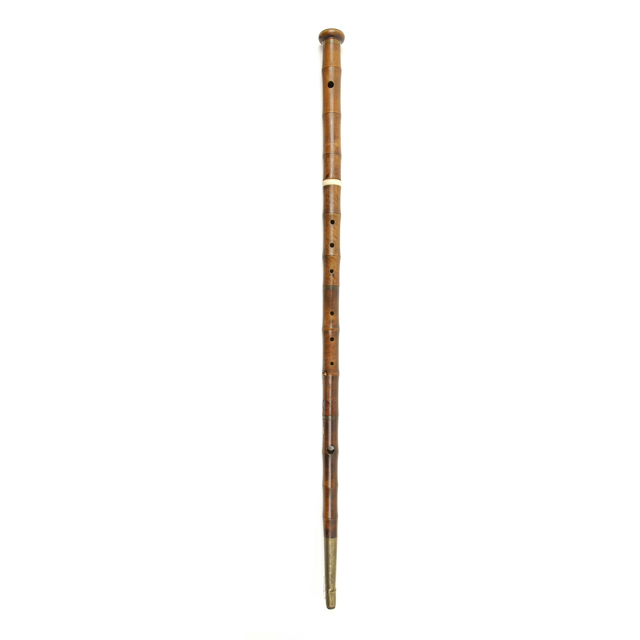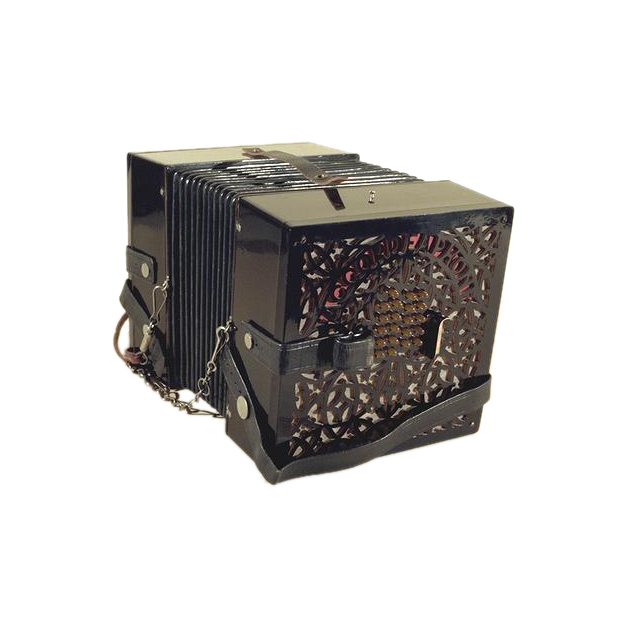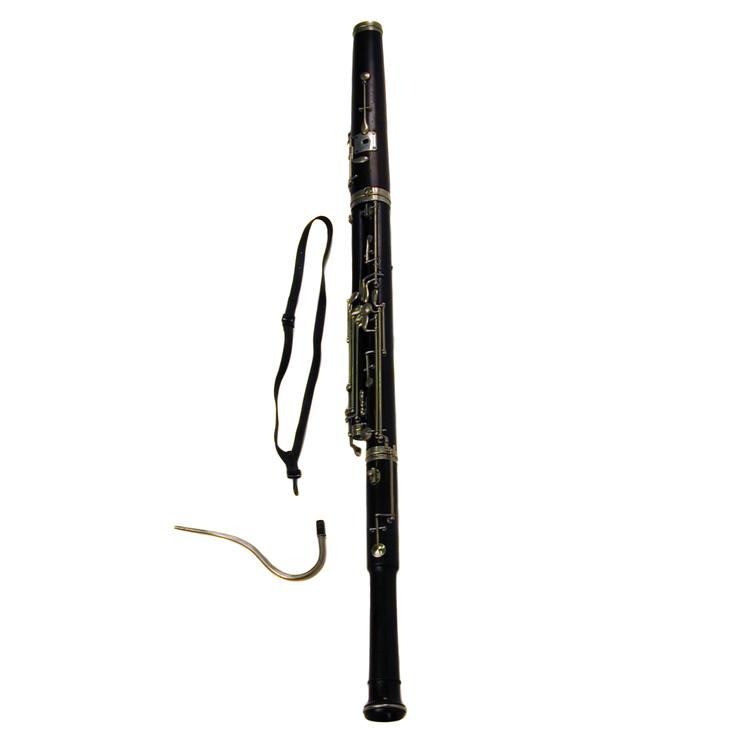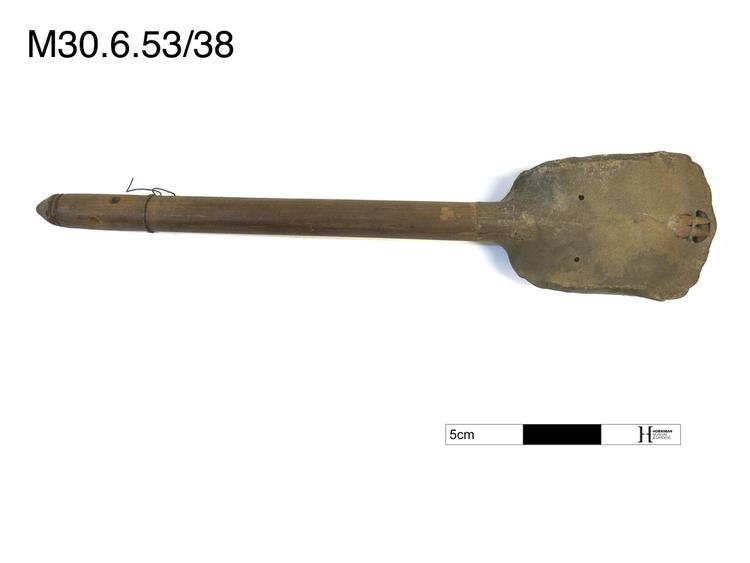
Walking stick flute. Stained wood with one wooden key, horn and ivory ferrules and brass sleeve on tip. Wooden key is flush with body and has leather pad. Two joints: head joint and three body joints combined as single unit. String lapped tenon. Body shaped to resemble bamboo. Both joints stamped: D. NOBLET/A PARIS; A flower motif appears above both inscriptions. A paper label has been adhered to the body joint but most of it has since been removed. The remaining section has the number 26 written in D.J. Blaikley's hand.
Walking stick flutes were popular novelties in the first decades of the nineteenth century. 'The Pilgrim to Compostella', a poem of 1829 by the poet laureate Robert Southey contains the following verse: And the staff was bored and drilled for those/ Who on the flute could play,/ And thus the merry pilgrim had/ His music on the way.






